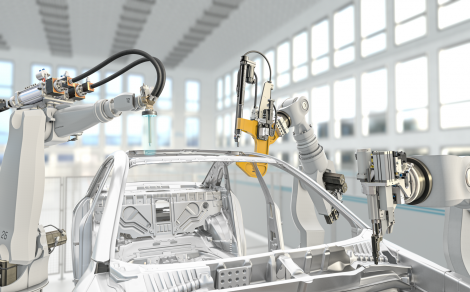On-site nitrogen generator system

To meet growing demand from vehicle builders for its specialised self-piercing rivets and tools - and to ensure 24/7 continuity of output from its Deeside production plant - Atlas Copco Industrial Assembly Solutions has announced it has installed an on-site nitrogen generation system that feeds its heat treatment hardening process operation and overcomes dependence on vendor-delivered supply of the gas.
As automotive assembly applications become more complex, with new hard-to-join materials, and others that cannot be welded, self-piercing rivets and tooling provides the answer. With its annual output in the order of 1 billion items, it is essential for Atlas Copco Industrial Assembly Solutions (formerly known as Henrob) to maintain the integrity and continuous performance of its rivet hardening furnaces, which are critical to end-product quality. The reliable supply of nitrogen, and its purity level, plays a vital part in the process.
Until recently, liquid nitrogen was supplied in bulk to site from the vendor, then vaporised for delivery to the production heat treatment furnaces. The purity level of the delivered nitrogen was 99.999%, but calculations proved that if the nitrogen supply could be set at 99.8% purity, it would reduce the running cost of a very high purity gas which was not necessary for the process.
It was this anomaly, among other factors, that convinced the production management team to opt for an on-site nitrogen generation system to be supplied by the company’s sister organisation, Atlas Copco Compressors.
On-site NGP+ generators provide nitrogen between 95-99.999% purity. They offer a more sustainable and much lower cost of ownership solution than reliance on gas delivered in cylinders or bulk liquid supply. Nitrogen gas is continuously available from an NGP+ whereas cylinders and bottles require transport and handling, which impacts on the environment, as well as time-consuming administration and paperwork.
Operating with the latest pressure swing adsorption (PSA) technology, the NGP+ plug-and-play generators, when connected to an existing clean, dry compressed air installation, offer an independent, dependable, and flexible supply of premium grade nitrogen at the process application’s required purity levels.
“The heat treatment of the rivets changes the material’s mechanical properties. We have to control the atmosphere of the furnaces for carbon content to make sure we do not either de-carb or carburise the parts,” said Carlo Sementa, manufacturing engineer at Atlas Copco IAS UK.
He continued: “We have a state-of-the-art control system alongside gas analysers, which are used for verification of atmosphere chemical composition. The nitrogen is used as a blanket to prevent oxidation of the steel parts and as a safety purge.”
In the heat treatment process, the procedure is to crack liquid methanol and, with the addition of nitrogen, deliver a consistent chemical composition to the furnace. Propane and air are also used in the process to fine tune the chemical composition that is needed to maintain the carbon content of the steel.
-
PPMA 2025
23 September, 2025, 9:30 - 25 September, 2025, 16:00
NEC, Birmingham UK -
Advanced Engineering Show 2025
29 October, 2025, 9:00 - 30 October, 2025, 16:00
NEC, Birmingham UK










